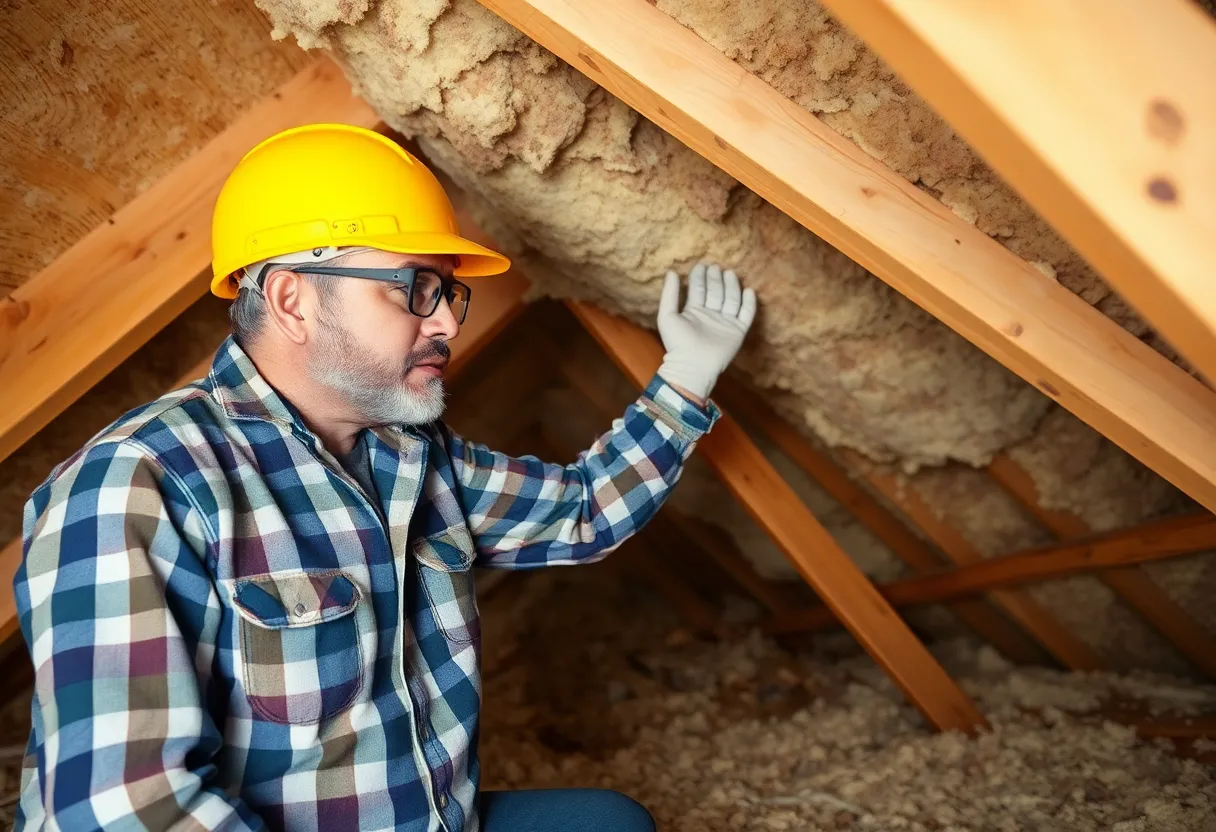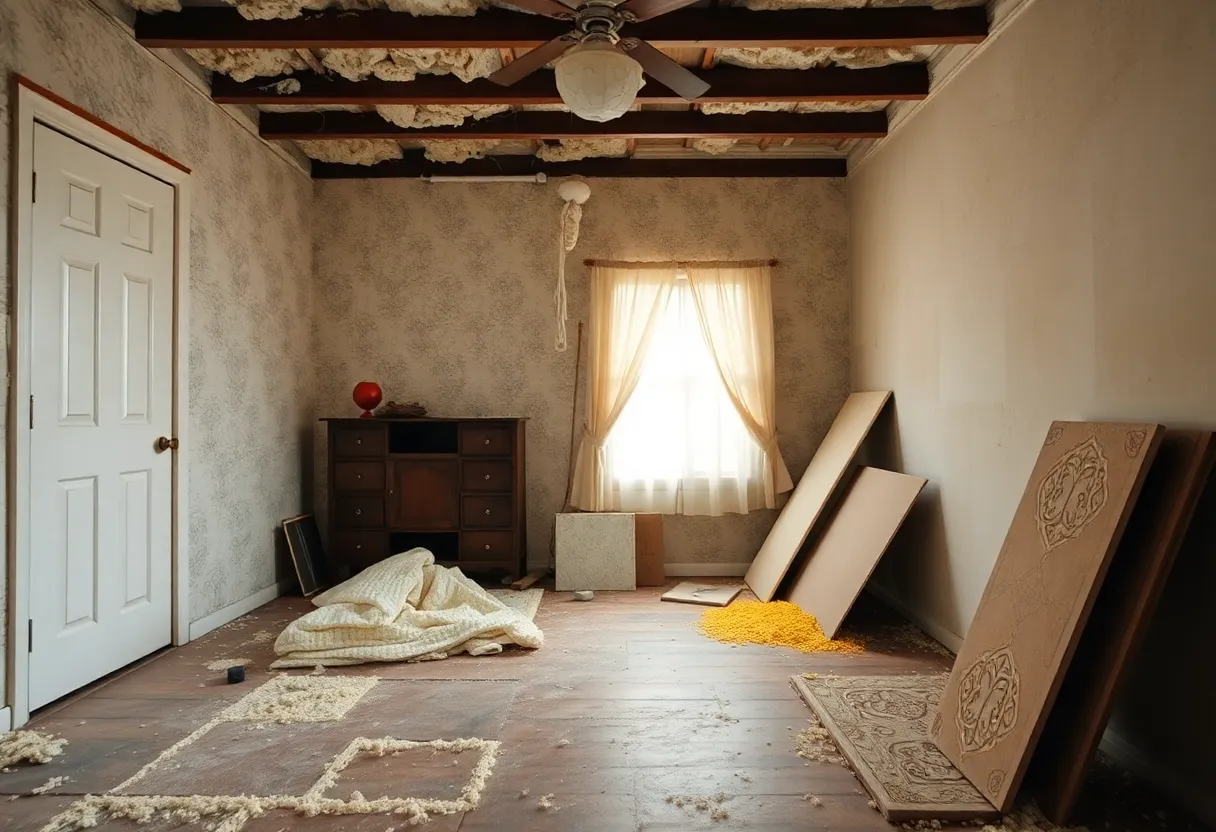News Summary
Recent asbestos issues in Illinois highlight the urgent need for effective removal regulations and safe practices amidst rising health risks.
Asbestos Controversies in Illinois: Lessons from a Home Renovation to a Historic Theatre
The hidden dangers of asbestos have resurfaced in Illinois, as two separate incidents highlight the critical need for proper removal practices and regulations in the state. One case illustrates the perilous journey of a homeowner’s attempt to remove asbestos from an old property, while another shows the complications arising from asbestos violations at a historic theatre.
Michael Flores: An Expensive Asbestos Removal Experience
In Ottawa, Illinois, Michael Flores invested nearly $20,000 to eliminate hazardous asbestos from the attic of his century-old home, which he envisioned converting into a vacation rental near the scenic Starved Rock State Park. To handle the removal, he enlisted the services of Clean Air Asbestos and Mold Control LLC, believing he was making a safe choice. However, the reality proved grim.
After the crew declared the job complete, Flores made a shocking discovery: hazardous vermiculite insulation, often containing asbestos, was still present in his attic. Despite presenting evidence of the unfinished work, the owner of Clean Air insisted that everything had been completed according to protocol. Feeling unsafe, Flores sought a second opinion from another contractor, who not only confirmed the attic’s continued danger but also quoted him an additional $8,000 for necessary further cleaning.
Flores then uncovered alarming security footage that revealed Clean Air workers laboring without proper protective gear, a clear violation of safety protocols during the asbestos removal process. Additionally, he learned that the vacuum utilized by the company was ill-equipped for asbestos cleanup, designed only for standard insulation removal. After reaching out to the vacuum manufacturer, Flores received confirmation that their equipment was inappropriate for dealing with hazardous materials.
In response to these unsafe practices, Flores escalated the matter to the Illinois Department of Public Health (IDPH), presenting concrete evidence of the violations. Internal communications revealed that the IDPH acknowledged Clean Air had “stretched the truth” regarding their adherence to safety standards. Unfortunately, despite the acknowledgment of these violations, Illinois law does not mandate asbestos abatement licenses for single-family homes, allowing unlicensed contractors to operate unchecked.
This regulatory loophole is alarming, especially considering that each year, over 200,000 people die worldwide from asbestos-related diseases, with 12,000 to 15,000 fatalities occurring in the United States alone. Experts criticize the absence of stringent regulations in residential settings, emphasizing the need for proper inspections, sealing procedures, and safety protocols to prevent future tragedies.
Asbestos Measures at Rialto Square Theatre
Meanwhile, a different kind of asbestos situation has unfolded at the historic Rialto Square Theatre in Joliet. The theatre faced closure as officials investigated an asbestos violation linked to improperly sealed bags of hazardous materials discovered during an inspection. Concerns raised by the Illinois Environmental Protection Agency (IEPA) prompted extensive air quality investigations.
Air samples revealed fiber counts below the IEPA’s clearance standards; however, uncertainties regarding air movement between theatre areas and adjacent businesses necessitated additional tests. This closure has significantly disrupted management’s plans for upcoming events, including weddings slated for September 8.
Management reached out to the IEPA for guidance and is diligently complying with safety recommendations in hopes of resuming scheduled performances after thorough cleanup and confirmation of acceptable air quality levels.
Call to Action
As these events continue to unfold in Illinois, they serve as a stark reminder of the urgent need for effective regulation and safe practices in asbestos removal. With the specter of mesothelioma and other serious health risks looming over improperly managed asbestos, accountability must be enforced at every level. The public deserves protection from hazardous conditions that could endanger their lives and significant investments.
With Michael Flores currently pursuing legal action against Clean Air Asbestos and Mold Control, there is hope that this case will shed light on the need for reform. As more citizens become aware of the potential dangers associated with asbestos exposure, the call for stricter regulations and better contractor accountability has never been more crucial.
Deeper Dive: News & Info About This Topic
HERE Resources
Investigation Launched Against Oxford City Council Over Asbestos Management
An Unsettling Shift: The Battle Over Chrysotile Asbestos Ban
The Changing Landscape of Cancer Detection and the Resurrection of Asbestos Issues
Historic Charges Against The School District of Philadelphia Over Asbestos Management
Shockwaves as EPA Plans to Reconsider Asbestos Ban
The Dark Legacy of Asbestos Exposure Among Veterans: A Continual Struggle
The Truth Behind BAP1 Mutations and Mesothelioma: Clearing Up Misconceptions
Los Angeles Wildfires: A Hidden Danger of Asbestos Contamination Looms Over Cleanup Efforts
Libby Asbestos Clinic in Crisis: Federal Court Hearing Sparks Controversy
The Lingering Danger of Asbestos: A Call for Action



















